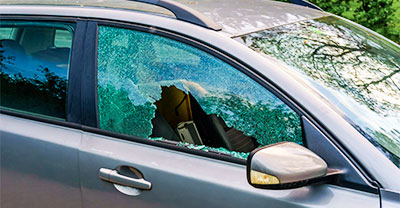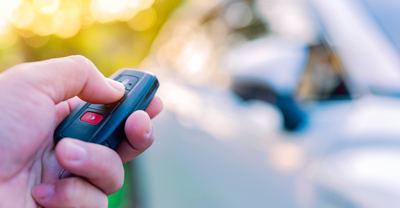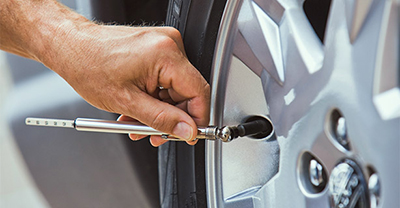Preparing for lesser-known road hazards
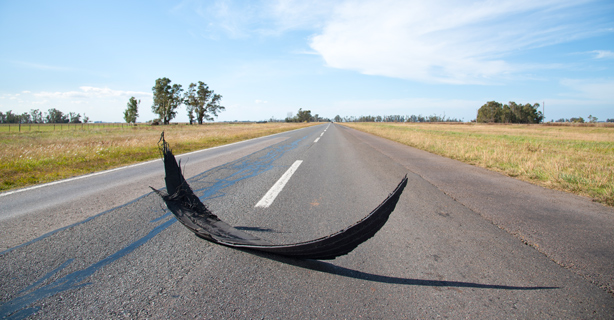
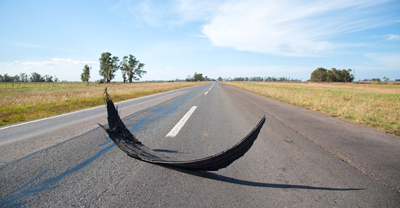
0 min. read
According to the World Health Organization, nearly 1.2 million people worldwide suffer a fatal car crash each year*. In countries that rely heavily on cars for transportation like the United States, driving is so ingrained in our routine that it can be easy to forget the potential dangers.
When we talk about dangerous driving, weather-based hazards like driving in the rain and driving in the snow are a large focus. But what about hazards you encounter less often?
Other, less-discussed hazards can be just as damaging—and potentially dangerous. Here are several to watch for, and how to respond when you encounter them:
Uneven roads

If you’re driving and suddenly hit an uneven patch of road, your steering wheel could jerk unexpectedly, causing you to swerve. Depending on the severity, and how well you maintain control of the vehicle, uneven roads could damage your tires or axle—or cause a collision.
Watch out for uneven road occurrences like:
Potholes
Heat-buckled pavement
Shoulder edge drop-offs
Speed bumps
Always scan for road conditions while you drive. If an uneven patch of road is unavoidable, slow your vehicle, keep both hands firmly on the wheel, and try to react calmly—gradually steering your car back in the proper direction.
Debris in the road

Debris on the roadway is often made more dangerous by drivers who react unpredictably to it. Data from the Foundation for Traffic Safety (FTS) shows that road debris was a factor in an estimated average of 50,000+ police-reported crashes which resulted in nearly 10,000 injuries and 125 deaths.*
Keep your eyes on the road and on the traffic ahead of you. You can spot debris based on how traffic down the road is reacting, giving you enough time to assess your surroundings, slow down, and change lanes as needed.
If the debris enters the roadway right in front of you (like something falling off a truck or blowing into the road) try not to jerk your wheel or swerve too harshly. You could collide with another vehicle, run yourself or someone else off the road, or lose control of your vehicle.
If you do hit something in the road, pull off somewhere safe and check for damages. You can then assess whether the damage has affected your vehicle’s drivability. Snap a couple pictures and note the time and date in case you need supporting documents for an insurance claim, and then contact a repair shop nearby.
Sun glare and reflections

The sun can be a serious hazard when you’re behind the wheel. Even a few seconds of glaring sun hitting your windshield and obscuring your vision can cause a serious accident. Be prepared to deal with sun whenever you drive, but watch out for these specific situations:
Sunrise
Sunset
Clear, sunny days
Sunny days with snow cover
Driving near water
Other drivers using their high beams improperly
While these scenarios may be out of your control, having polarized sunglasses within reach while you’re driving can help reduce your risk. Keeping your windshield and dashboard clean can also increase visibility in the face of sun glare.
Low-visibility areas

Proceed with caution in situations where you’re less likely to see other drivers. A large part of defensive driving is being able to anticipate and react to other vehicles. Low-visibility areas, like blind spots in heavy traffic or coming around sharp turns, limit that reaction time.
To minimize blind spot areas, always ensure your mirrors are properly positioned before you drive. Some newer vehicles have blind spot detection systems. Data shows these systems can reduce crashes that lead to injuries by 23%. For older, used vehicles, you can have an aftermarket blind spot monitor installed for as little as $200.
Sharp curves make slowed or stopped traffic ahead of you, as well as oncoming traffic, hard to see. Make sure to follow posted speed reductions and use your headlights and blinker.
Construction zones

Work zone fatalities have hit all-time highs in recent years. In the United States in 2021, there were 956 work zone traffic fatalities, up from the previous high of 863. Speeding was a factor in 32% of cases.*
Beyond it being the law, there are several other good reasons to slow down in construction zones. To name just a few:
The presence of vulnerable workers
Changing traffic routes
New instructional signage
Uneven lanes
Loose gravel
Construction waste and other debris
Road barrels and barriers
Accidents occur when drivers don’t adapt to the changed conditions. Failure to respond to changing traffic flow can result in rear-end collisions or sideswipes when drivers overcorrect.
Animal collisions

Depending on where you live, wildlife-related collisions can be a major issue. In largely rural states like Wyoming, these crashes account for nearly 20% of accidents. West Virginia, Montana, Pennsylvania, South Dakota, and Michigan are the top five states in per capita animal-automobile collisions—especially concerning deer.
As you scan the road, keep an eye out for animals entering the roadway. Many animals move at dawn and dusk, making them difficult to see. The reflection of your headlights—or high beams if you’re alone on the road—in an animal’s eyes can alert you to their presence. Safely slow down your vehicle until the roadway is clear, making sure to watch for additional animals, as they rarely travel alone.
The general information in this blog is for informational or entertainment purposes only. View our blog disclaimer.
*Data accuracy is subject to this article's publication date.








